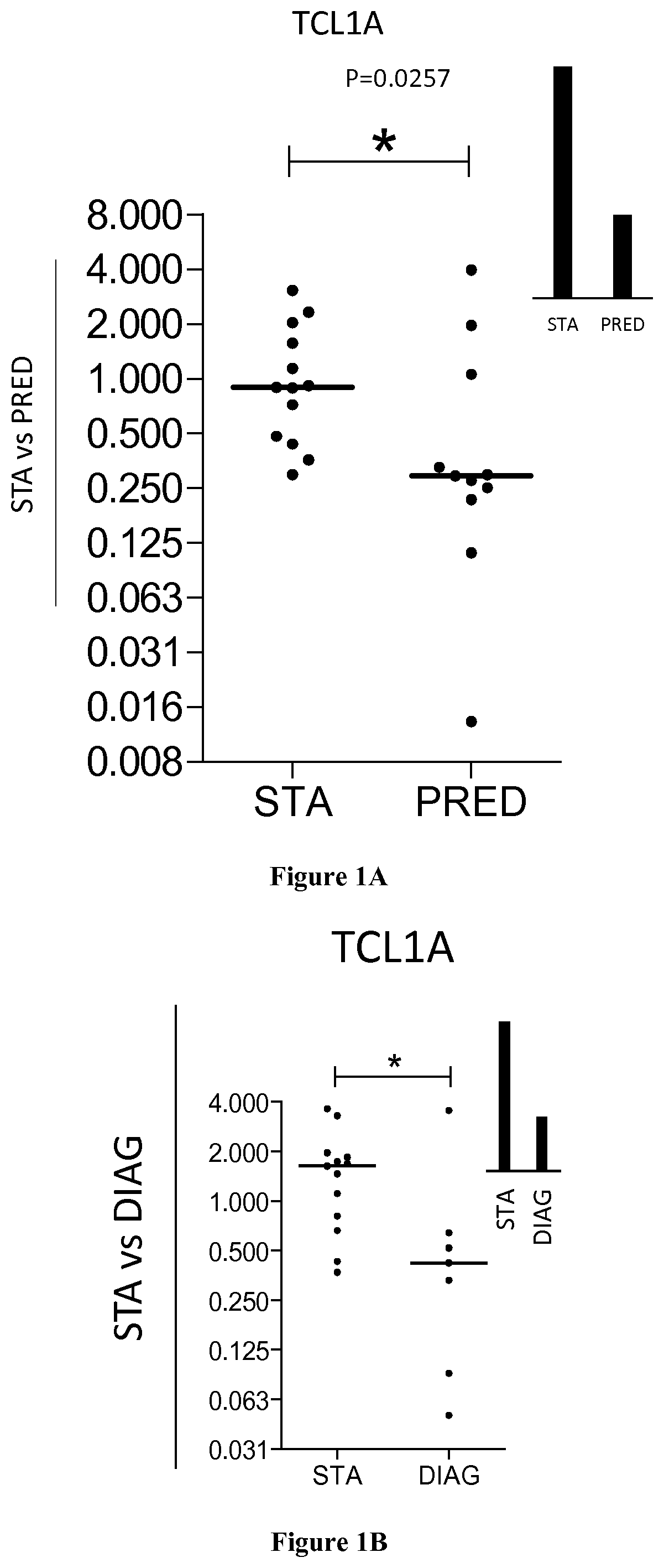Methods and compositions for predicting chronic lung allograft dysfunction
a technology of chronic lung allograft and composition, which is applied in the field of lung transplantation, can solve the problems of affecting the survival rate of patients, and limiting the number of patients who can invasively carry out lung-centered approaches
- Summary
- Abstract
- Description
- Claims
- Application Information
AI Technical Summary
Benefits of technology
Problems solved by technology
Method used
Image
Examples
example
[0036]Material & Methods
[0037]Patients
[0038]LTR were recruited within the multicentre COLT (NCT00980967) cohort. Study was approved by local ethical committee (Comitéde Protection des Personnes Ouest 1-Tours, 2009-A00036-51) and all participants provided written informed consent. Patients were defined as STA or BOS by a blind adjudication committee based upon pulmonary function tests: persistent Forced Expiratory Volume in 1 second (FEV1) decline of ≥20% from baseline for BOS group; chest imaging to confirm the diagnosis; and absence of confounding factors according to ISHLT / ERS / ATS guidelines (21, 22). Stable patients display no signs of chronic dysfunction for at least 3 years after lung transplantation. Eighty patients (40 STA and 40 BOS) were included in the identification set and 24 in the validation set (13 STA and 11 BOS).
[0039]RNA Isolation
[0040]Peripheral blood samples were collected in PAXgene tubes (PreAnalytix, Qiagen), and stored at −80° C. No infection or acute rejecti...
PUM
| Property | Measurement | Unit |
|---|---|---|
| time | aaaaa | aaaaa |
| time | aaaaa | aaaaa |
| time | aaaaa | aaaaa |
Abstract
Description
Claims
Application Information
 Login to View More
Login to View More - R&D
- Intellectual Property
- Life Sciences
- Materials
- Tech Scout
- Unparalleled Data Quality
- Higher Quality Content
- 60% Fewer Hallucinations
Browse by: Latest US Patents, China's latest patents, Technical Efficacy Thesaurus, Application Domain, Technology Topic, Popular Technical Reports.
© 2025 PatSnap. All rights reserved.Legal|Privacy policy|Modern Slavery Act Transparency Statement|Sitemap|About US| Contact US: help@patsnap.com


